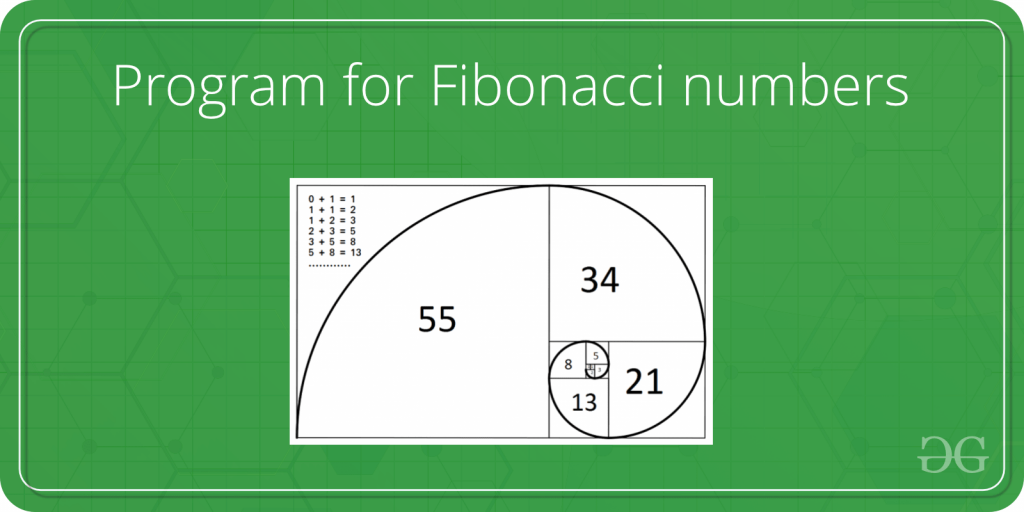
#Fibonacci series in bluej series#
We can use the memoization technique in order to make the program calculate the Fibonacci series faster.We can create a Fibonacci series using iterative or recursive methods.A Fibonacci series is a sequence of numbers in which every number (except the first two) is the sum of the previous two numbers.The space complexity of this approach is O(n) as well. The time complexity of the memoization approach to calculate the Fibonacci series is O(n).

Given a number n, print n-th Fibonacci Number. In mathematical terms, the sequence Fn of Fibonacci numbers is defined by the recurrence relation F n F n-1 + F n-2 with seed values F 0 0 and F 1 1. In case n was not stored, we calculated the Fibonacci value by calling the function for the previous two Fibonacci values, then stored this value into the hashmap, and finally returned it to get our answer. The Fibonacci numbers are the numbers in the following integer sequence. If n t h n^ n t h Fibonacci number was stored in the hashmap, we directly used its value to get the desired Fibonacci number. If n was 0, we returned 0, and if n was 1, we returned 1. I dont demand proofs, as long as the solution is correct.

In this function, we first checked if the variable n was 0 or 1. Is it possible to cut it into two pieces with one straight cut such that the pieces form a heart Yes. In the above example, we created a function fibMemoize that uses memoization to calculate the Fibonacci number. Step 2: Initialize the local variable x 1, y 1, i 2. Following are the steps to find the series of the Fibonacci Series: Step 1: Declare the variables x, y, z, n, i. In the previous approach, we were calculating each Fibonacci number separately but in this approach, we going to use our previous results to calculate the current number. Steps to find the Fibonacci series of n numbers. So, if we have calculated the Fibonacci of a number, we can reuse it without doing the calculation again. But, in this approach, we will use the previous results to calculate the current Fibonacci number. In the previous approach, we were calculating each Fibonacci number separately. a directory including all files in all subdirectories, recursive factorial, recursive power, recursive Fibonacci numbers, and a simple knapsack problem. In this technique, the result of the previous calculation is stored (cached) and reused. Memoization is a programming technique used to improve the performance of the recursion programs.

Example 2įibonacci Number in Java with Memoization This technique is much faster than the recursive method. To solve this problem, we can use the memoization technique to create the Fibonacci series. It would take too long to calculate the Fibonacci series of a huge length using the recursive method. The space complexity of the recursive method is O(n), if we consider the recursive stack.Įxponential time complexity is extremely inefficient. The time complexity of the recursive approach to solving the Fibonacci series is O ( 2 n ) O(2^n) O ( 2 n ) i.e. In the above example, we defined a recursive function fibRecursion to get nth Fibonacci number and call it repeatedly (for i=0 to i=8) in order to create a Fibonacci series of length 9.


 0 kommentar(er)
0 kommentar(er)
